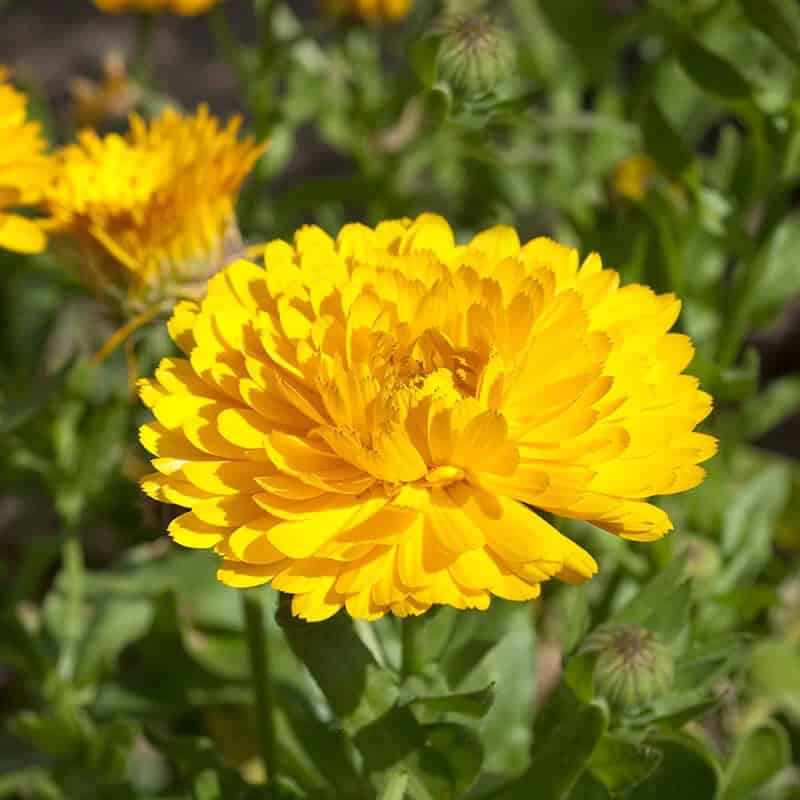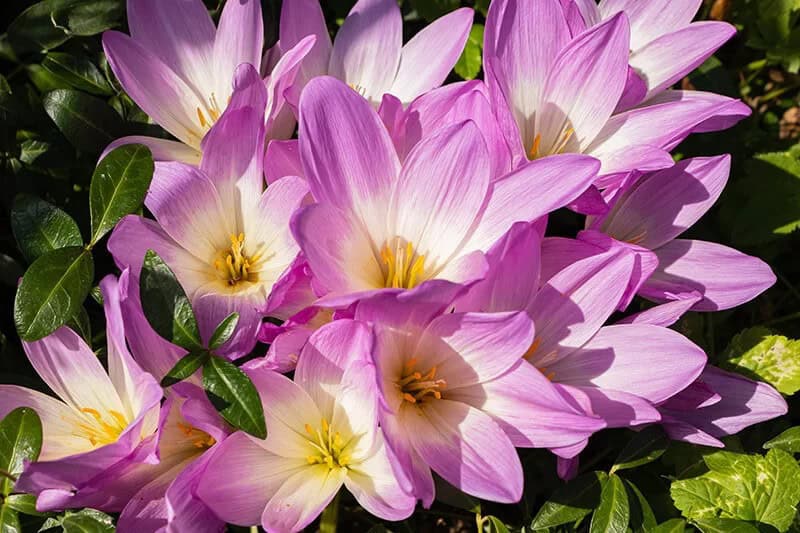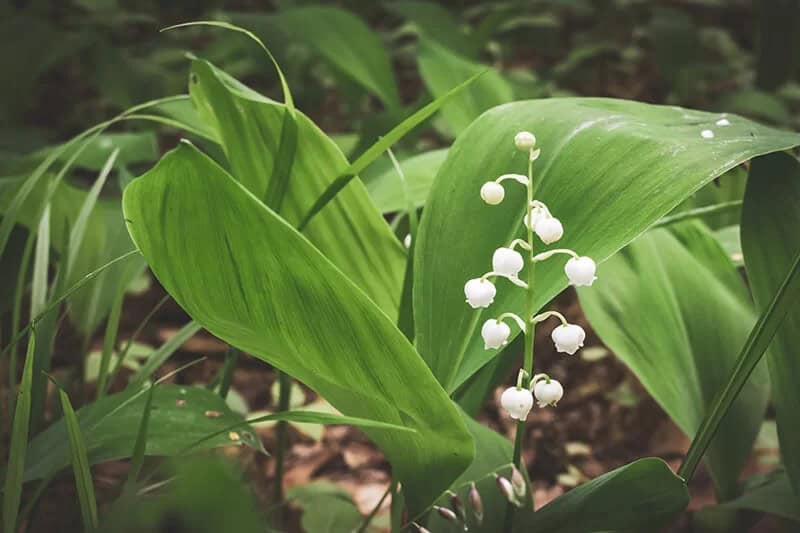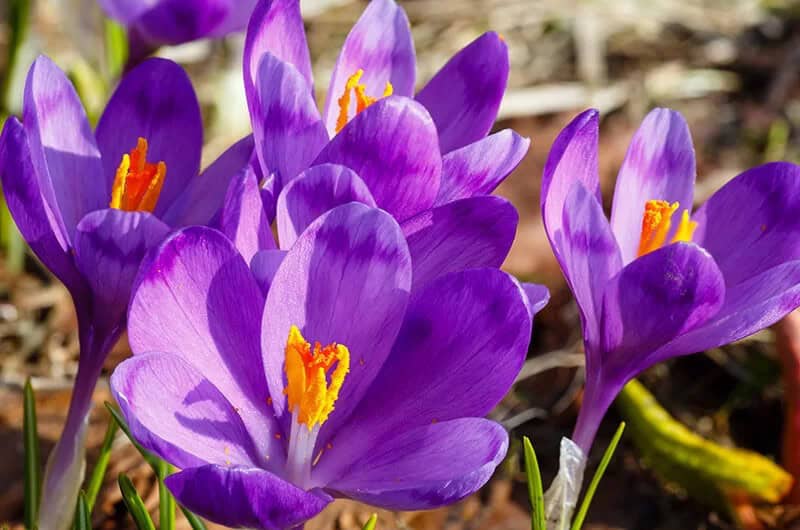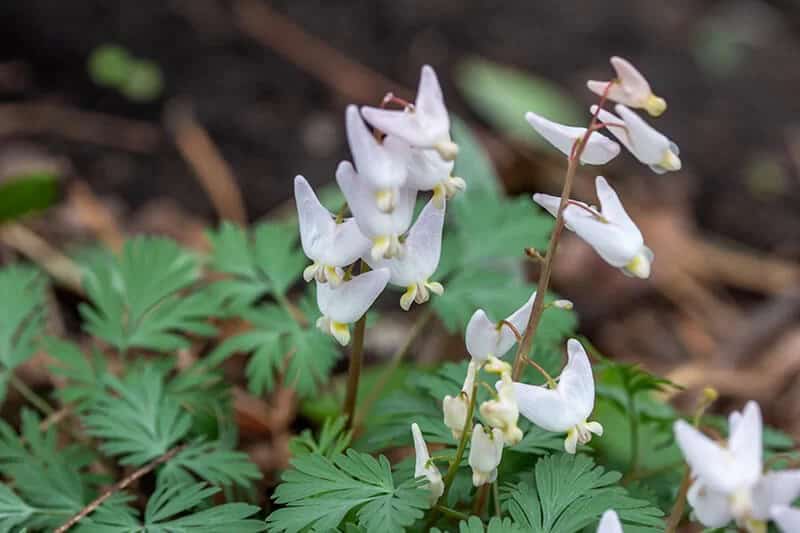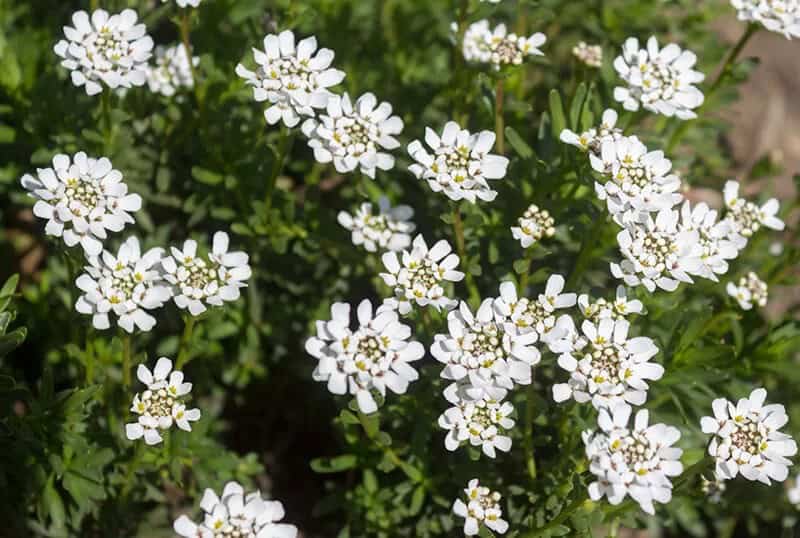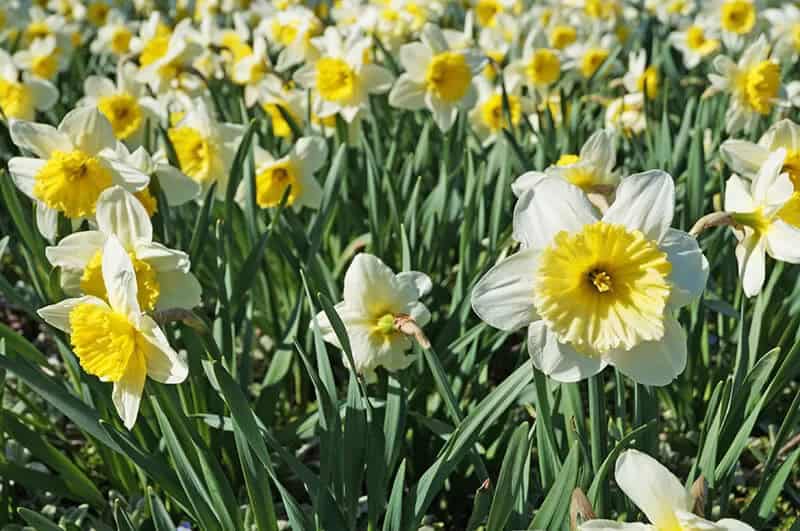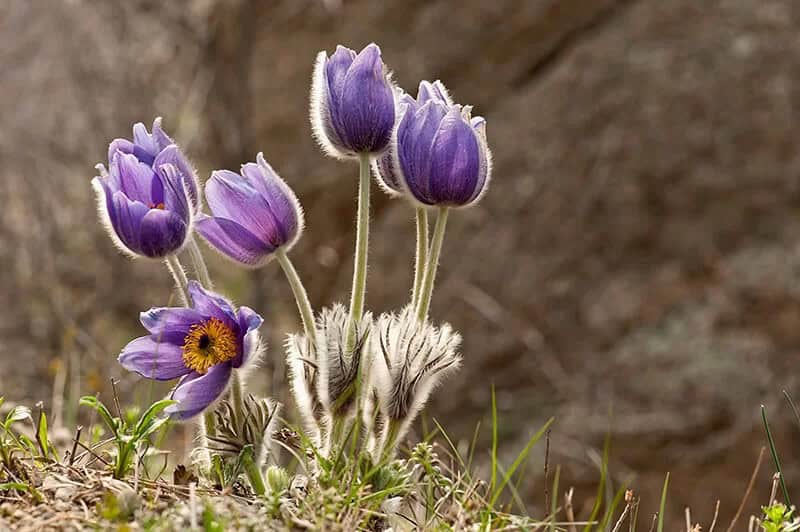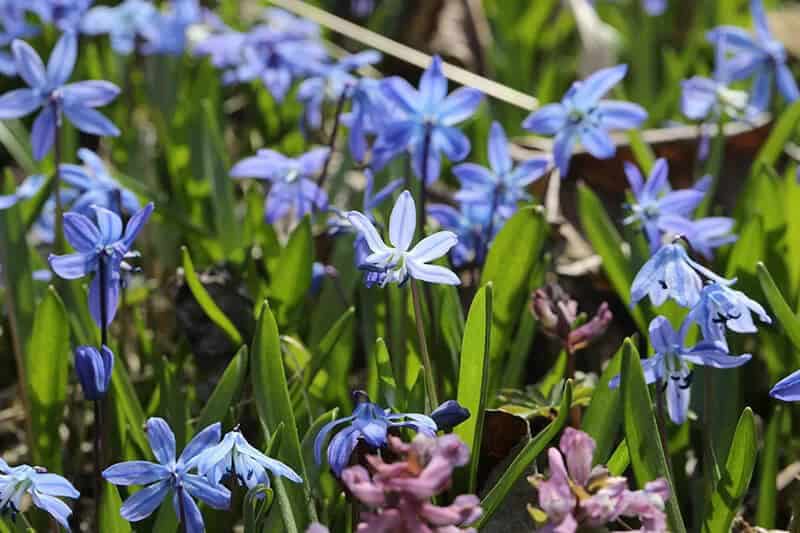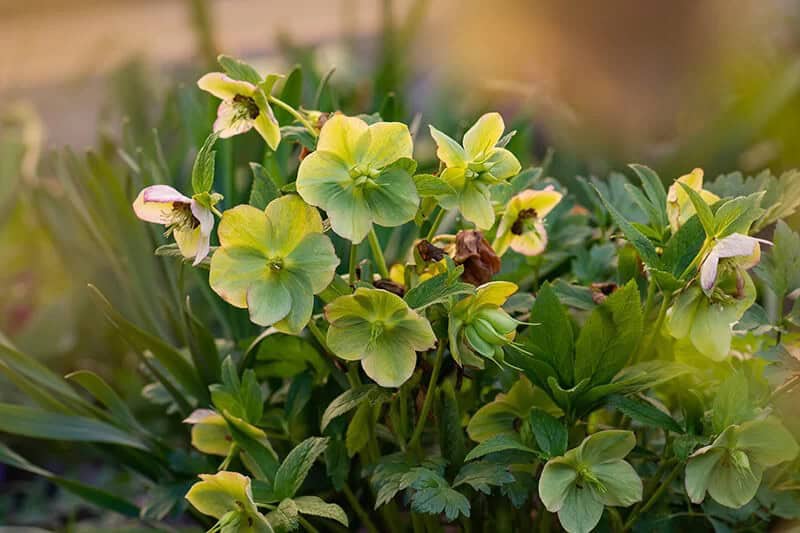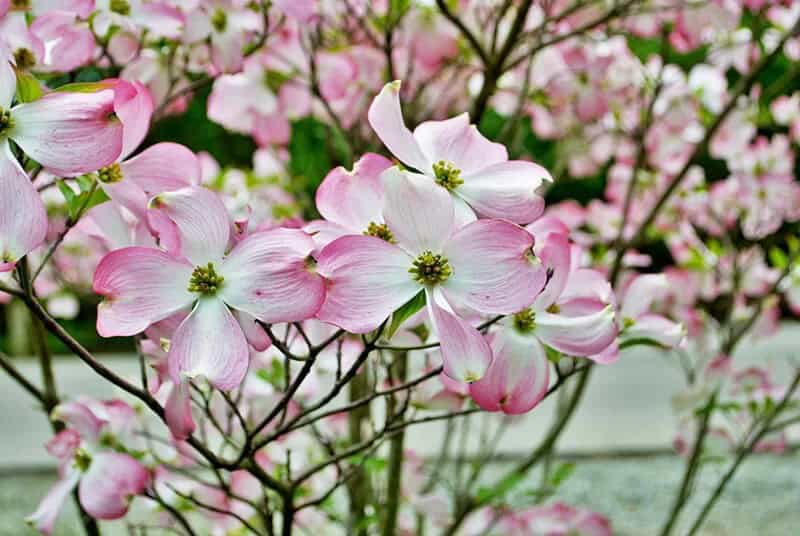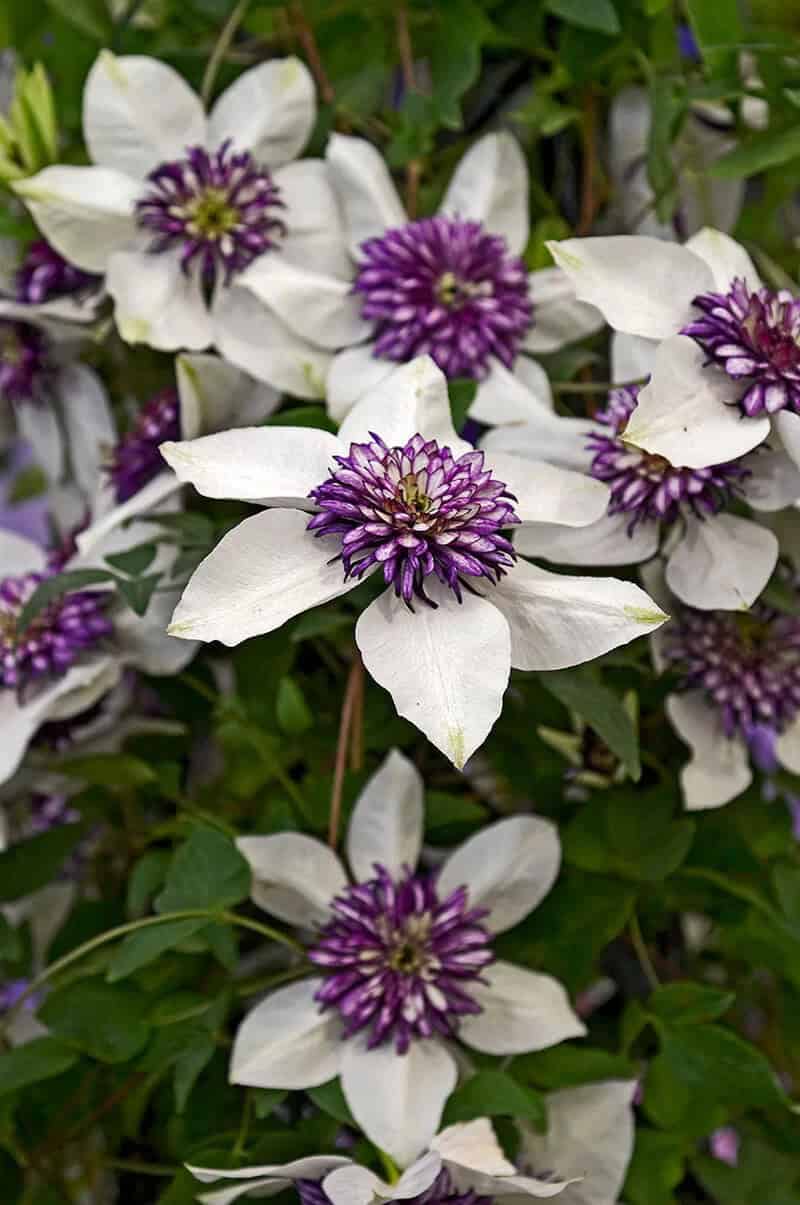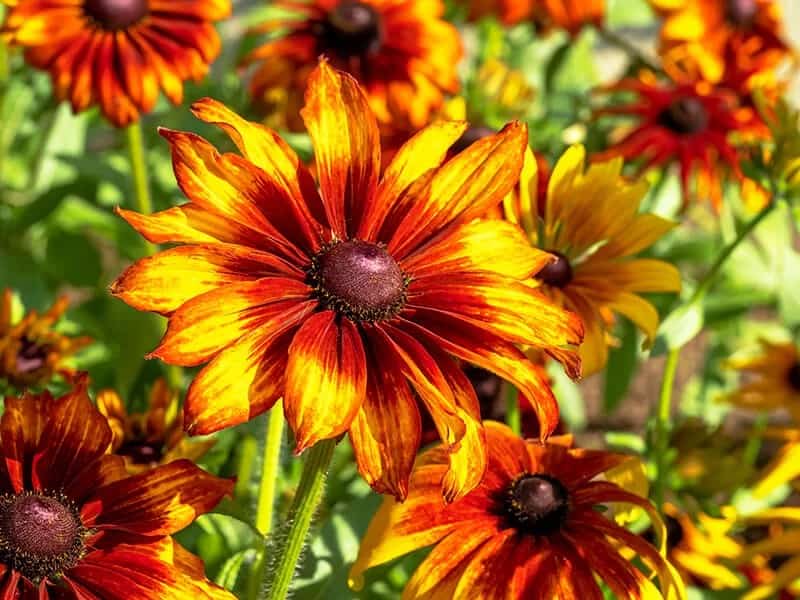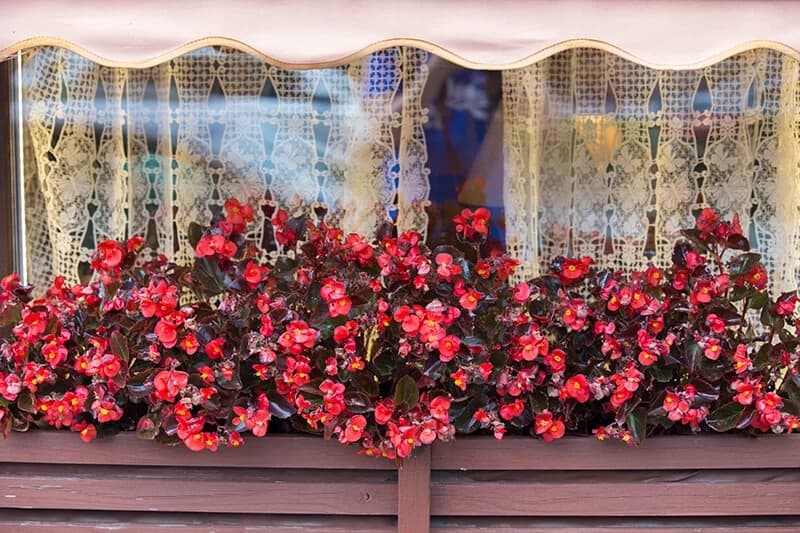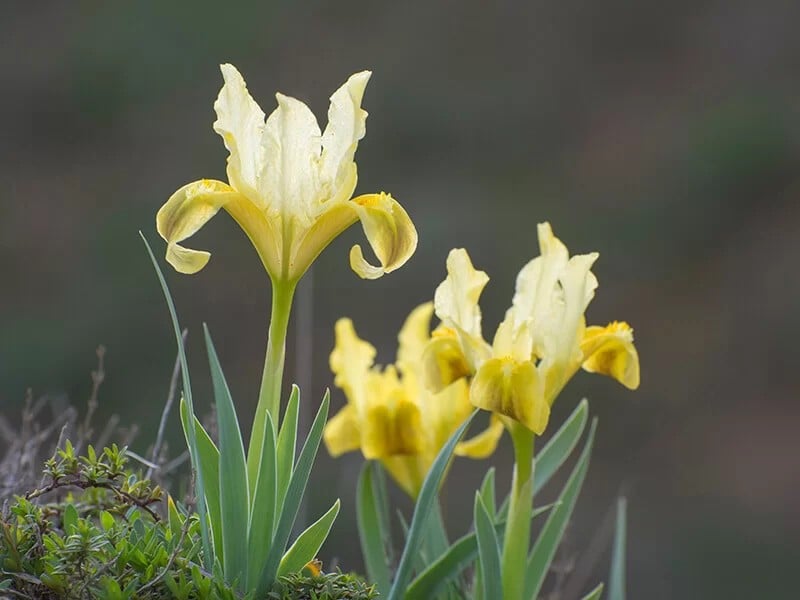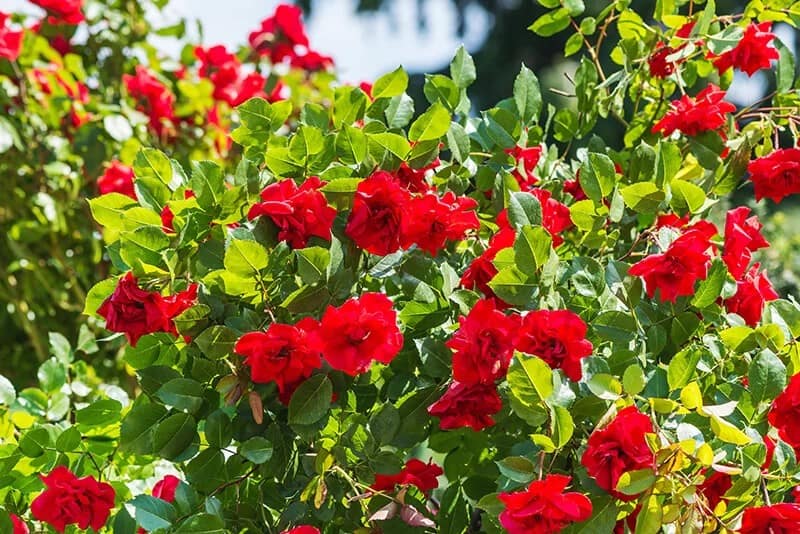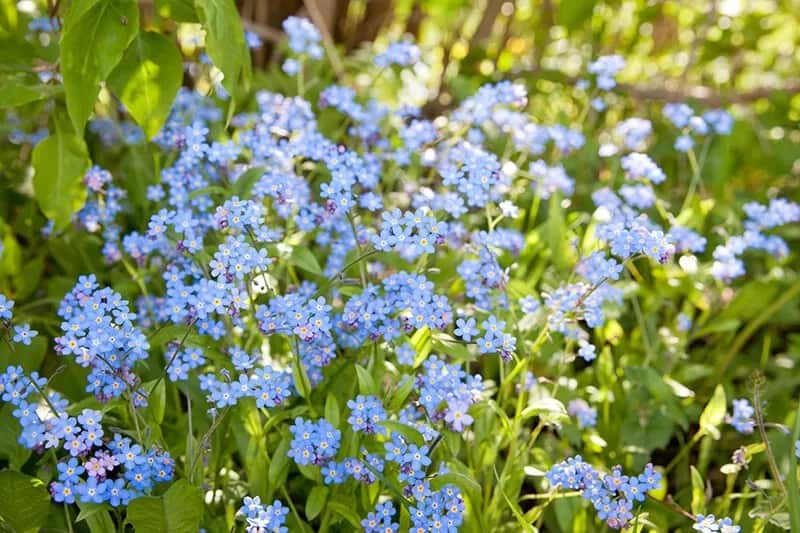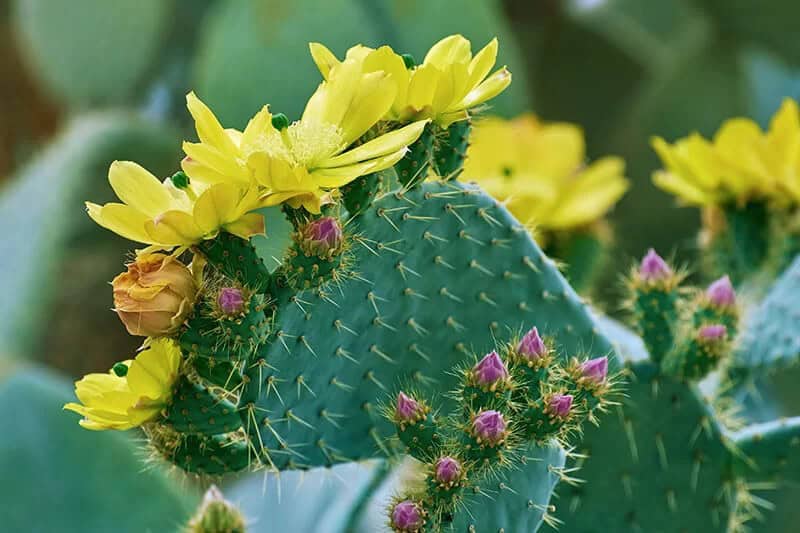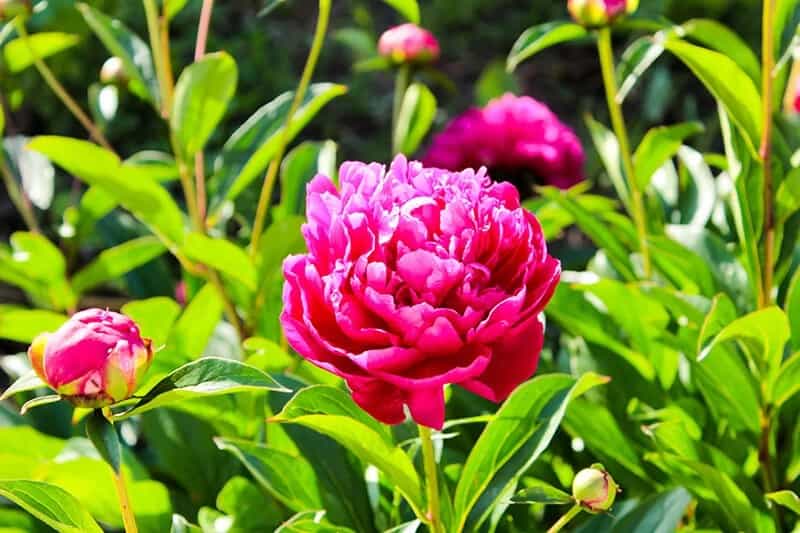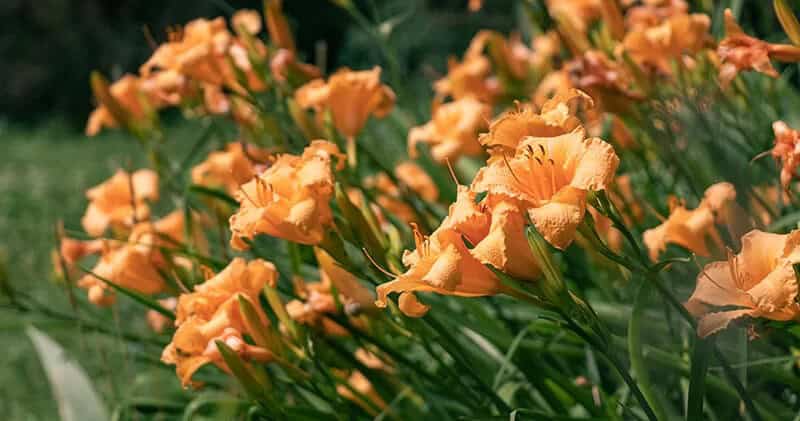Transforming an outdoor space from bland to grand is as simple as adding the right garden flowers. However, before you start planting, take a step back and assess your soil quality. A thorough evaluation will help you determine which types of flora will thrive in your specific environment, ensuring a harmonious and visually appealing arrangement that invites relaxation and rejuvenation.
27 Exquisite Garden Flowers to Plant in Your Landscape for a Tranquil Outdoor Space
When selecting plants for your garden, it’s crucial to consider how much sunlight each area receives. Rather than trying to adjust the environment to accommodate a specific plant, it’s more practical to choose varieties that naturally thrive in those conditions. While it’s not impossible to make a particular plant work, it may require extra effort and maintenance to achieve success.
Scotch Marigold (Calendula Officinalis)
Scotch marigolds are a delightful addition to any garden, boasting a rich symbolism that spans endurance, joy, remembrance, and grief. With medium water needs, average soil with good drainage, and a growing zone range of 2 to 11, this hardy flower thrives in full sun to part shade conditions. Its blooming season typically falls between May and June, making it an excellent choice for gardeners seeking to continue the long-standing tradition of cultivating these vibrant orange blooms.
While some may be familiar with bright yellow varieties, Scotch marigolds also come in deep orange and pale apricot hues, offering a range of options for those looking to add some warmth and character to their outdoor spaces.
Meadow Saffron (Colchicum ‘Waterlily’)
Without the need for a pond or water feature, you can still bring the beauty of waterlilies to your garden. This fall-blooming variety of meadow saffron (Colchicum autumnale) offers an elegant and understated alternative. With its delicate white flowers and slender foliage, it’s easy to see why this plant has become a popular choice for adding a touch of serenity to any outdoor space.
In terms of growing conditions, the meadow saffron requires average soil with good drainage, can tolerate medium watering needs, and thrives in full sun to partial shade. It’s also hardy enough to survive in USDA zones 4 to 7. As you gaze out at your garden during September and October, you’ll be treated to a stunning display of white blooms that evoke the simplicity and beauty of waterlilies – all without the need for a splash of water.
Lily of the Valley (Convallaria Majalis ‘Golden Slippers’)
Lily of the valley’s charm lies in its rapid spreading nature across shaded areas, where its bell-shaped flowers sway gently in the breeze and release a sweet fragrance. Notably, this variety stands out with unique yellow foliage in early spring that gradually transitions to a lively green hue. Moreover, it exhibits a more restrained spread compared to other varieties, making it an attractive addition to any garden.
Phlox (Phlox Drummondii)
Intense pink phlox, despite its relatively short stature, more than makes up for it with its resilient nature. This low-maintenance garden flower is surprisingly adaptable and can thrive in acidic, loose-structured soils that would prove challenging for many other plants. While it may appear to have succumbed to the heat of summer, the flowers will often revive with the onset of cooler fall temperatures.
Phlox of this type require medium watering, full sun to part shade, and a growing zone range of 2 to 11.
Spring Crocus (Crocus Vernus ‘Remembrance’)
Spring Crocus Flowers: Unleashing the Joy of Spring The regal purple petals of Spring Crocus Flowers serve as a beacon, signaling the end of winter’s monotony and welcoming the vibrant colors of spring. These stunning blooms thrive in medium water conditions, gritty soils with good drainage, and bask in the warmth of full sun to part shade. Gardeners in zones 3-8 can rejoice, as these flowers are perfectly suited for their region.
The blooming season typically spans March to April, providing a three-week spectacle of majestic purple flowers, each adorned with an elegant silvery sheen.
Butterfly Banners (Dicentra Cucullaria)
Butterfly banners bring a touch of whimsy to any garden. These delicate flowers are often associated with the symbolism of chivalry, evoking feelings of honor and courtesy. If you’re looking to grow your own butterfly banner, you’ll need to provide it with a medium level of water. The soil should be rich in humus and have good drainage, although it can tolerate clay soils as well. This perennial is hardy in USDA zones 3-7 and thrives in partial shade to full shade.
In March, you can expect the flowers to bloom, filling your garden with a beautiful display of pale pink or snowy white hues. The fern-like foliage adds an extra layer of charm to these already enchanting blooms.
Candytuft (Iberis Sempervirens ‘Weisser Zwerg’)
Candytuft’s unique charm lies in its stoic beauty, symbolized by its white flowers that bloom from March to May. This low-growing perennial, reaching only up to 8 inches tall, is an excellent choice for those who prioritize flowers over foliage. Its medium water requirements and ability to tolerate drought make it a practical addition to any garden. The plant thrives in average soil with good drainage and full sun, making growing zones 3-8 suitable for its cultivation.
As the leaves are often obscured by its showy blooms, candytuft is particularly well-suited for borders, where its compact height can be fully appreciated.
Grape Hyacinth (Muscari latifolium)
The grape hyacinth’s unique appearance is not only captivating but also symbolic of playfulness and peace of mind. This enchanting flower thrives in medium water conditions and average soil with good drainage, making it a great addition to any garden. Its ideal growing zones are 3 to 8, allowing it to flourish in many regions. Providing full sun to part shade, the grape hyacinth is adaptable to various lighting conditions.
One of the highlights of this flower is its blooming season, which typically occurs from March to April. When in bloom, a cluster of grape hyacinths appears as an upturned bunch of ripe grapes, with the darker base providing a striking contrast to the lighter tips, creating two shades of blue-violet that are simply dazzling.
Large-Cupped Daffodils (Narcissus ‘Ice Follies’)
The ‘Ice Follies’ daffodil variety stands out for its unusually large blooms and a delicate, ruffled corona that gradually transitions from a vibrant yellow to a soft white. This timely bloomer is a perfect addition to any garden, as it bursts forth in early spring with bright yellow petals, only to make way for other flowers to take center stage later on.
With a medium water requirement, tolerance of drought through dormancy, and ability to thrive in average soil with good drainage, this variety can be grown in USDA hardiness zones 3 to 8. It also does well in full sun to partial shade and blooms from March to April, making it an ideal choice for gardeners seeking a low-maintenance yet visually striking addition.
Eastern Pasqueflower (Pulsatilla Patens)
The striking violet flowers, characterized by their silky hairs that appear to radiate a soft glow in the morning sunlight, bring an enchanting element to your wintry landscape even before they fully bloom. Renowned for their hardiness, these alpine prairie flowers are often among the first to emerge, defying early spring snow showers and thriving in conditions that include dry to medium water needs, gritty soil with good drainage, and full sun.
As a low-maintenance addition to your garden, these blooms can be expected from March to April, making them an ideal choice for growing zones 3 to 7.
Scilla (Scilla Bifolia)
When it comes to symbolism, the scilla flower is often associated with loyalty, fidelity, and constancy, making it a thoughtful addition to any garden design. This low-maintenance perennial requires medium watering and can thrive in average soils with good drainage – sandy loam-type soils are particularly well-suited. Scilla is hardy in zones 3-8, making it accessible to gardeners across a wide geographic range.
While it prefers full sun to part shade, its blooming season in March and April creates a stunning display of intense blue hues. One of the best features of scilla is its ability to provide a pop of color around deciduous trees without competing with their foliage during the growing season. Plant scilla in sweeping groups for pools of soothing blue that will add a touch of elegance to your garden.
Hellebore (Helleborus × Hybridus ‘Yellow Lady’)
The ‘Yellow Lady’ flower stands out from the crowd with its distinctive shade of yellow and intriguing maroon freckles. For those looking to add a touch of eccentricity and euphoria to their garden, this unique bloom is an excellent choice. With medium watering needs and a preference for humus-rich, alkaline soil with good drainage, ‘Yellow Lady’ can thrive in zones 4-9. Part shade to full shade provides the perfect lighting conditions for optimal growth.
As the seasons change, you’ll be rewarded with blooms from March to May. The maroon freckles add an extra layer of visual interest that will last throughout the season, making this flower a fantastic addition to any garden.
Saucer Magnolia (Magnolia × Soulangeana)
Saucer magnolias are renowned for their stunning floral displays, boasting blooms that can reach up to 8 inches in diameter. This versatile plant is perfect for adding a touch of elegance to any garden, with its flowers available in a range of colors including whites, burgundies, purples, and pinks. Not only do they provide visual appeal, but saucer magnolias also possess symbolism tied to femininity, love for nature, nobility, perseverance, and dignity.
When it comes to growing conditions, saucer magnolias require a medium water supply, tolerating acidic soil with good drainage and also clay soils. They thrive in USDA zones 4 to 9, making them suitable for gardens across North America. Ideally, they prefer full sun to partial shade, allowing the flowers to shine without scorching the plant.
March marks the beginning of their blooming season, providing an early splash of color in the garden.
Pink Flowering Dogwood (Cornus Florida f. Rubra)
Pink flowering dogwoods, native to North America, are a popular choice for many gardens in the United States due to their adaptability to various conditions. These deciduous trees typically grow up to 30 feet tall and provide an impressive display of pink flowers, setting them apart from other species with their bold color. With a Latin name that translates to ‘red’, it’s no wonder these trees have become synonymous with springtime, love, and romance.
They require medium water needs, average soil with good drainage, and can thrive in zones 5 to 9. Providing full sun to part shade, pink flowering dogwoods bloom from April to May, making them a stunning addition to any garden.
Clematis (Clematis Florida var. Sieboldiana)
The majestic purple and cool white hues of this bicolor clematis variety create a striking contrast that’s sure to captivate. As seen in pictures of garden flowers, this flowering vine is truly magnificent when it comes to adding height and visual interest to your outdoor space. Its symbolisms are closely tied to mental agility and cleverness, making it a great addition to any garden where you want to stimulate intellectual pursuits.
With medium water needs, fertile soil that drains well, and full sun to part shade light requirements, this clematis thrives in zones 6 through 9 during the blooming season of June to September.
Black-Eyed Susan (Rudbeckia Hirta ‘Cappuccino’)
When selecting garden flowers to incorporate into your outdoor space, it’s crucial to consider bloom timing. Black-eyed Susans, with their stunning summer-long blooms until the first frost, are an excellent choice for any landscape. The ‘Cappuccino’ variety is particularly noteworthy, boasting a rich chocolate brown center cone, a corona of bronze-hued red, and yellow ray-shaped petals that add visual interest to your garden.
These flowers also carry symbolic meanings such as amiable nature, justice, encouragement, and motivation. In terms of growing conditions, Black-eyed Susans require medium watering tolerance, average soil with good drainage, and can thrive in clay soils. They are hardy plants suitable for zones 3-8, preferring full sun exposure. As a bonus, the ‘Cappuccino’ variety blooms throughout June until frost.
Forsythia (Forsythia ‘Courtasol’ Gold Tide)
The forsythia’s symbolism is closely tied to the arrival of spring, representing a new beginning and the promise of exciting times ahead. This variety stands out from others in its ability to top out at around 48 inches, making it an ideal choice for defining spaces without obstructing views. Its early spring blooms are truly breathtaking, as if nature itself has decided to burst forth with vibrant color.
As for growing conditions, this plant requires medium watering, loose soil with good drainage, and can tolerate clay soils. It thrives in zones 5 through 8, preferring full sun to partial shade.
Waxy Begonia (Begonia Semperflorens Cultorum Group)
The Waxy Begonia is a symbol-rich plant, conveying caution, uniqueness, harmony, gratitude, or even warning. Its modest water requirements of medium mean it thrives in average soils with good drainage, perfect for zones 10 to 11. With full sun to part shade and an impressive blooming season from June until frost, this beauty is sure to captivate.
While its native hardiness zone might be cooler, the waxy begonia can still bring joy as an annual, offering a fresh look each year with its palette of white, red, and pink hues.
Siberian Iris (Iris ‘Butter and Sugar’)
The majestic iris boasts a rich symbolism, representing nobility, chivalry, wisdom, messages, faith, and purity. This stunning bloom thrives in medium to wet soil conditions, tolerating drought and adapting to slightly acidic soil with good drainage – it can even survive clay soil. Gardeners will find this iris suitable for growing zones 3-8, where it demands full sun to part shade. As the blooming season approaches in May, its yellow and white petals unfurl like a masterpiece of nature.
The delicate white petals stand tall, while the yellow petals cascade downwards in a mesmerizing display reminiscent of melted butter. Even after the flowers have faded, the attractive blue-green foliage provides an element of color, adding depth to any outdoor space.
Japanese Kerria (Kerria Japonica ‘Pleniflora’)
Japanese Kerria is a striking addition to any garden, boasting a vibrant display of golden double flowers. At 10 feet tall, this shrub is ideal for creating a natural screen or informal hedge. The ‘Pleniflora’ variety stands out with its unique pom-pom shaped blooms and slightly taller stature compared to other species in the Japanese Kerria family. With medium water needs, average soil with good drainage, and a growing range of zones 4-9, this plant thrives in part shade.
Its blooming season typically takes place from April to May, making it an excellent choice for gardeners seeking a low-maintenance yet visually striking addition to their outdoor space.
Bleeding Heart (Lamprocapnos Spectabilis ‘Hordival’ Valentine)
The Bleeding Heart (Dicentra spectabilis) is a beloved garden flower that has captivated hearts with its one-of-a-kind, heart-shaped blooms. With its rich, cherry-pink hue, this variety stands out for its artistic appeal, going beyond mere visual interest. The plant’s unique foliage plays nicely into the overall aesthetic, particularly when paired with a lush groundcover to create a visually striking display.
A moderate watering schedule and average soil with good drainage are key to bringing out the best in this beauty, which thrives in zones 3-8 under partial shade to full shade conditions. Blooming season typically falls between April and May, making it an ideal choice for adding romance and whimsy to any garden.
Floribunda Rose (Rosa Europeana)
The iconic red rose is a timeless choice for any garden. The ‘Floribunda’ variety is particularly noteworthy, as it produces clusters of vibrant red blooms throughout the summer months. One of its most appealing features is its moderate scent, which is less overpowering than some other rose varieties. This makes it an excellent option for those who appreciate the beauty of roses but find their fragrance overwhelming.
The floribunda rose thrives in well-drained soil with a slightly acidic pH, and it’s tolerant of medium water levels. It’s suitable for growing zones 5 to 9 and prefers full sun exposure. Blooming occurs from May to September, making it an excellent choice for adding vibrant color to your garden during this time.
Forget-Me-Nots (Myosotis Sylvatica ‘Victoria Blue’)
Imagine a lush expanse of cloud-like blooms in shades of brilliant blue, punctuated by the bright contrast of warm yellow centers. If you’re looking to bring this picturesque scene to your garden, ‘Victoria Blue’ is an excellent choice. This compact variety of forget-me-not boasts clusters of delicate flowers that are more densely packed than their bushier counterparts, creating a visually striking display.
Forget-me-nots are relatively low-maintenance, requiring medium water levels, fertile soils with good drainage, and full sun to part shade. They thrive in growing zones 3-8, blooming from April to May. With proper care, you can enjoy this charming and symbolic flower throughout the year, its beauty a reminder of undying love.
Plains Prickly Pear (Opuntia Macrorhiza)
The plains prickly pear plant is an unusual addition to any garden, as it’s the only cactus on our list of flowering plants. Unlike traditional foliage-based flowers, these succulent wonders feature thick, water-storing pads that resemble small green cushions. As the summer months arrive, bright yellow blooms emerge, eventually giving way to showy red fruit. When handling this plant, it’s essential to exercise caution due to its prickly nature.
Cultivating plains prickly pear requires specific conditions, including dry soil with good drainage, full sun exposure, and a tolerance for drought. Its growing zones span from 3 to 9, making it suitable for a wide range of climates. With the right care, this plant can bring a touch of whimsy and hope to any outdoor space.
Peony (Paeonia Lactiflora ‘Sarah Bernhardt’)
Peonies are a beloved fixture in gardens globally, celebrated for their longevity and extravagant blooms. The iconic pink variety with ruffled double flowers is a timeless classic. To experience the full range of peony beauty throughout the season, plant multiple varieties with staggered bloom times. These striking flowers can be showcased effectively when planted individually or in groups, providing a stunning display that’s sure to impress.
In terms of growing conditions, peonies require medium water needs, rich soil with good drainage, and thrive in zones 3 to 8. They also prefer full sun to partial shade. The blooming season typically begins in May, making them an excellent addition to any garden seeking to make a statement.
Icelandic Poppy (Papaver Nudicaule ‘Champagne Bubbles Scarlet’)
The Icelandic poppy is a unique and captivating addition to any garden. Its crinkled petals offer a departure from the traditional dark-centered poppy, providing a breath of fresh air in terms of flower design. The ‘Champagne Bubbles Scarlet’ variety boasts a striking large saucer-like bloom with puckered petals and a bright yellow eye. What’s more, Icelandic poppies can be grown as annuals, allowing you to enjoy their eye-catching features year after year.
With its medium water needs, average soil requirements, and ability to thrive in zones 4-8, this charming flower is an accessible option for many gardeners. Its full sun requirements mean it will do best in areas that receive plenty of sunlight. As a bonus, ‘Champagne Bubbles Scarlet’ blooms from April to June, providing a delightful display of color during the spring and early summer months.
Daylily (Hemerocallis ‘Mini Pearl’)
The ‘Mini Pearl’ daylily is a treasure trove of symbolism, with its delicate, ruffled melon-pink blooms representing flirting, desire, success, wealth, and the ability to forget painful events from the past. This stunning variety thrives in medium water conditions, averaging out at 3-9 on the growing zone scale. It’s also quite adaptable when it comes to soil types, preferring well-drained loamy soils but tolerating average conditions with ease.
When it comes to lighting, ‘Mini Pearl’ shines brightest in full sun to part shade, and its blooming season typically runs from May to July. While each individual bloom may only be visible for a day, the collective show of flowers is truly something to behold. As an added bonus, daylilies are notoriously easy to grow and offer stunning displays of color – making them an excellent choice for beginners looking to add some flair to their garden.
27 Vibrant Garden Flowers to Plant for a Fresh Look in Your Outdoor Sanctuary
While a well-planned bloom schedule is crucial for a thriving garden, it’s equally important to consider the unique qualities each flower brings to the table. A mix of early spring blooms and late fall interest can create a visually appealing landscape that changes with the seasons. However, true gardening success hinges on selecting plants that resonate with your personal style.
Whether it’s the vibrant colors, intricate shapes, or symbolic significance, choose flowers that speak to your soul and allow your garden to become an extension of yourself.
